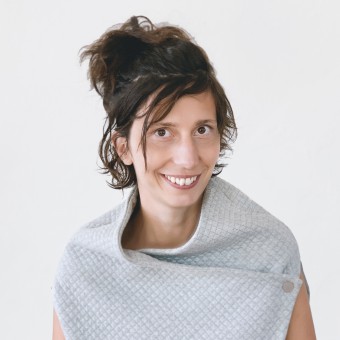
| THE AWARD |
| CATEGORIES |
| REGISTRATION |
| SUBMIT YOUR WORK |
| ENTRY INSTRUCTIONS |
| TERMS & CONDITIONS |
| PUBLICATIONS |
| DATES & FEES |
| METHODOLOGY |
| CONTACT |
| WINNERS |
| PRESS ROOM |
| GET INVOLVED |
| DESIGN PRIZE |
| DESIGN STORE |
| THE AWARD | JURY | CATEGORIES | REGISTRATION | PRESS | WINNERS | PUBLICATIONS | ENTRY INSTRUCTIONS |
Interview with Sara Kele |
Home > Designer Interviews > Sara Kele |
Editor Frank Scott (FS) from DesignPRWire has interviewed designer Sara Kele (SK) for A’ Design Award and Competition. You can access the full profile of Sara Kele by clicking here.

FS: Can you tell us more about your company / design studio?
SK: Sara Kele is by education an industrial designer, but knowledge acquired at different universities - aesthetics, architecture, cultural anthropology - also affects her complex design approach. Born in Budapest, Hungary, but a wide range of travels around the globe gives deep inspiration for her work, whether it’s the vast horizons of Fuerteventura or the bustling downtown of Barcelona. The home of her most cherished projects is the brand sarakele, founded ten years ago. Here, she creates exciting, yet simple and timeless furnitures and interiors while keeping sustainability in focus. Her experimental, forward-thinking approach goes beyond the visual to investigate new materials and production methods. Localism is her priority - integrating traditional craftsmanship with cutting- edge, innovative techniques whenever possible. But even when working on larger scale projects, she urges factories to focus on sustainability, and awareness on environmental- and societal effects of production.
FS: What is "design" for you?
SK: My mission to design sustainable furnitures has several pillars. A strong approach to stopping over-consumerism is making quality, long-lasting, inter-generational objects. This same goal, from the consumers angle is to educate people on conscious thinking and a behaviour of choosing only the ones they really need. I also find solutions in material usage, searching for natural, bio-degradable or bio-fabricated, renewable or recycled materials for my objects. Which is sometimes the easier part - it’s more tricky to persuade factories to use them. When I’m collaborating with large scale factories I urge them to focus on finding sustainable solutions together in their material usage, and their environmental and societal effects on production. Hands-on exploration of the potential of sustainable materials is one of my favourite parts of my work. For example I invented a method for recycling factories plywood waste, or a surprisingly thin concrete surface with the same qualities as the usual thick ones. Another smart way is to design for disassembly, to open up possibilities for further repair or recycling. For me localism is also a priority, whenever it’s possible I’m relying on the amazing knowledge of traditional craftsmanship and also drawing inspiration from this heritage.
FS: What kinds of works do you like designing most?
SK: I enjoy creating exciting yet simple and timeless furniture and interiors while keeping sustainability in focus. I take an experimental and forward-thinking approach to my work, going beyond the visual to investigate new materials and production methods. Localism is a top priority, which means integrating traditional craftsmanship with cutting- edge, innovative techniques whenever possible. I hope that factories will place a greater emphasis on sustainability and environmental awareness, as well as the societal consequences of production.
FS: From your point of view, what are the responsibilities of a designer for society and environment?
SK: Design plays a huge role in finding viable solutions in the climate crisis paradigm. Designers’ motivation has always been to help advance human life to a more livable and lovable way, through connecting art and science research with everyday life. Sustainability is a mindset, that can guide designers’ decisions whether they’re seemingly insignificant details, or major contributions to the paradigm. I think nowadays we have a huge responsibility, we need conscious decision-making in order to maintain a livable planet for further generations, and designers can serve as initiators. Not just by putting the circular economic model at the forefront, but also by making this mindset approachable and widespread. In my experience, sustainability a mindset. On every, even very small decisions, you have to ask yourself ‘why?’ and ‘is this absolutely necessary?’ or ‘is there a better way?’ - confront and question yourself, to find the most sustainable approach. Which is quite doable, and it can grow into an invisible habit as you go along. The bigger challenge is always to make the final products a competitive option in today’s market environment as well. The goal is to retain a balance between personal-, societal- and environmental values. We don’t need to give up any of those in favour of the others.
FS: Thank you for providing us with this opportunity to interview you.
A’ Design Award and Competitions grants rights to press members and bloggers to use parts of this interview. This interview is provided as it is; DesignPRWire and A' Design Award and Competitions cannot be held responsible for the answers given by participating designers.
Press Members: Register and login to request a custom interview with Sara Kele.
| SOCIAL |
| + Add to Likes / Favorites | Send to My Email | Comment | Testimonials |
